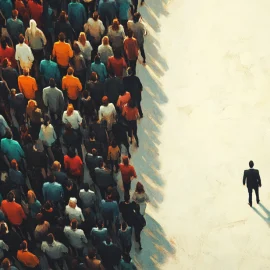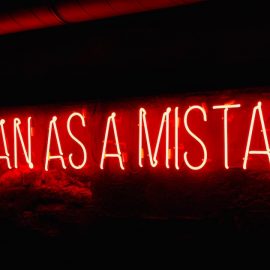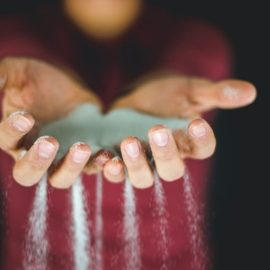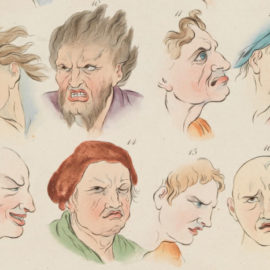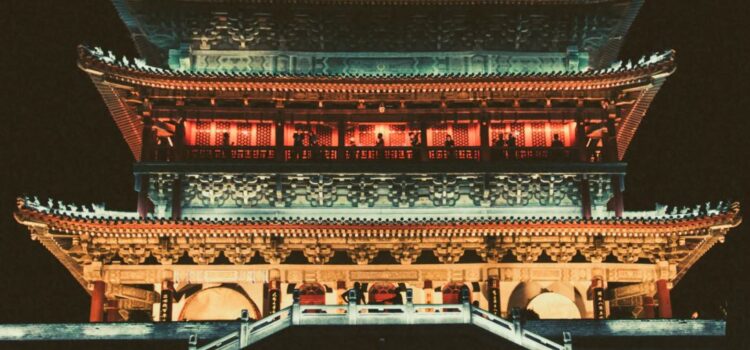

This article is an excerpt from the Shortform book guide to "Quiet: The Power of Introverts" by Susan Cain. Shortform has the world's best summaries and analyses of books you should be reading.
Like this article? Sign up for a free trial here .
What is the difference between soft power and hard power? Where do you see these different forms of power?
Soft power and hard power are ways of describing the preference for an extrovert ideal or not. In Asian cultures, soft power is appreciated more than the hard power revered in American society.
Keep reading to better understand soft power and hard power.
Soft Power and Hard Power in Asian Culture
The extrovert ideal isn’t as “natural” or as revered everywhere as Americans might think. Whether extroversion or introversion predominates may depend on where you live or the culture in which you were raised. This describes the difference between soft power and hard power.
In 2004, research psychologist Robert McCrae published a map of the world based on the personality traits most prominent in various countries and cultures: Asia is introverted while Europe and the U.S. are highly extroverted. While it’s important to avoid stereotyping entire cultures and assigning group characteristics to individuals, it would be a mistake to ignore Asian cultural differences and introversion—there are aspects of Asian cultural style and personality the Western world can learn from.
A great deal of research underscores that there are cultural/personality type differences between East and West. For example, one study comparing children in Shanghai and Ontario, Canada, found that while shy and sensitive personalities were discouraged in Canada, children with those personalities were popular in China and were more likely to have leadership roles. In another study, Chinese students told researchers they preferred friends who were sensitive, humble, helpful, and honest, while American students wanted friends who were cheerful, enthusiastic, and gregarious. Chinese students valued moral qualities and achievement, while Americans focused on sociability.
When researchers asked Asian-Americans and European-Americans to think out loud while solving logic problems, the latter group did better. However, the Asian-Americans did much better when allowed to work on the problems silently. Soft power and hard power played out differently in these groups.
In Asian culture, talk is for communicating necessary information; being quiet is a sign of thoughtfulness. The East and West have contrasting proverbs about silence. For instance:
- Those who know do not speak. Those who speak do not know. —Lao Zi
- Speech is civilization itself. The word, even the most contradictory word, preserves contact—it is silence which isolates. —Thomas Mann
One reason for the different attitudes may be group identity. Asians see themselves as part of a larger entity, whether a family, community, or company. They often put group interests ahead of personal interests to promote group harmony. In contrast, Western culture celebrates the individual—everyone is free to express themselves and follow their destinies. While individuals are sociable, they don’t defer to a group—rather, they seek to stand out or compete.
Asians value traits that promote group harmony, such as sensitivity and humility; Western culture favors those that promote individuality, such as verbal ability and assertiveness.
In one study of brain activity, American and Japanese participants were shown pictures of men in dominant and submissive postures. The Americans’ brain pleasure centers reacted more strongly to the dominant images, while the Japanese reacted more to the humble/submissive images. However, while Westerners may view deference as subordination, to many Asians, it reflects concern for others, which is known as “relationship honoring.” In Japan, social anxiety disorder isn’t fear of embarrassing yourself, as it is in the West; it’s fear of embarrassing others.
Challenges for Asian-Americans
Some Asian-American students and professionals face challenges as introverts are forced to function in an extrovert culture.
This is even true in the technology epicenter of Cupertino, California, home of Apple and Google, where 77% of students in the Monta Vista High School in 2010 were Asian-American.
The school culture, which values quiet, smart students, is something of a cocoon—introverts are accepted and even admired, and studying takes priority over socializing.
However, the Asian-American students worry about adjusting when they leave school and enter a world where extroversion dominates (where, for instance, class participation is required). In interviews with author Susan Cain, they talked about feeling conflicted while trying to meet the dictates of two cultures. They sometimes lost sight of the value of their Asian cultural ideals. They might try to be “Asian superstars,” who do well academically like “traditional Asians,” but who also try to be outgoing and get noticed.
One study showed Chinese-American twelve-year-olds felt good about themselves and adhered to their parents’ value system. But when they reached age seventeen and had greater exposure to the extrovert ideal, their self-esteem fell.
Besides losing self-esteem, Asian-Americans eventually pay another price—their cultural differences can translate into lower paychecks. In his book on meritocracy, The Big Test, journalist Nicholas Lemann concluded that meritocracy works for Asian-Americans until graduation; then, they lag because they don’t have gung-ho cultural style needed to get ahead.
Similarly, the wives of Chinese professionals in Cupertino told author Susan Cain that their husbands commuted to jobs in China because their less flamboyant styles prevented them from advancing in U.S. businesses, where promotion depends on presentation skills. Other Asian-American professionals sought training in American-style extroversion.
Soft Power
Adapting to an extrovert culture isn’t the only path to success, however. You can succeed and still be true to yourself. Soft power and hard power each have their strengths.
There’s an Asian concept of “soft power,” or leadership “by water rather than by fire.” It consists of getting what you want by being subtle, by winning people over with strong convictions and caring, rather than by strong-arming or rolling over them. The organization Mothers Against Drunk Driving succeeded in rallying people to their cause through soft power—the strength and emotional resonance of their message.
Soft power is quiet persistence in building a team or support through day-to-day personal interactions—Mother Teresa, the Buddha, and Gandhi were extraordinarily effective in wielding this kind of power.
Gandhi was shy, quiet, and fearful as a child. These traits later evolved into a strength—restraint and nonresistance. For instance, when Gandhi was excommunicated by his caste for going to England to study law, he accepted the unfair judgment and abided by the caste dictums.
Because of his nonresistance, the caste left him alone and later even helped in his political work. Had Gandhi fought back, he and caste leaders would have been in perpetual conflict. Gandhi’s non-resistance or refusal to challenge others became a hallmark of his life. He viewed passivity not as weakness, but as “firmness in the pursuit of the truth.” Because he stayed focused on his ultimate goal rather than being diverted by unnecessary fights, Gandhi’s restraint (rooted in his shyness) turned out to be one of his greatest assets.
The soft power of quiet persistence isn’t limited to moral heroes like Gandhi. It drives many Asian-Americans’ academic success. Students from Asian countries consistently get top scores in the TIMSS exam, the Trends in International Mathematics Study, which is given every four years to children around the world. Researchers found that those who excelled on the test were the most persistent. Other studies have also found high levels of persistence and the ability to resist distraction among Asian children.
Embracing soft power—applying the strengths of conviction and persistence—may be more effective in some circumstances than traditional leadership styles. You can appreciate both soft power and hard power.

———End of Preview———
Like what you just read? Read the rest of the world's best book summary and analysis of Susan Cain's "Quiet: The Power of Introverts" at Shortform .
Here's what you'll find in our full Quiet: The Power of Introverts summary :
- How society overvalues extroverts
- Why introverts' overlooked strengths are the key to greater success in work, school, and society
- How extroversion caused the fall of Enron

